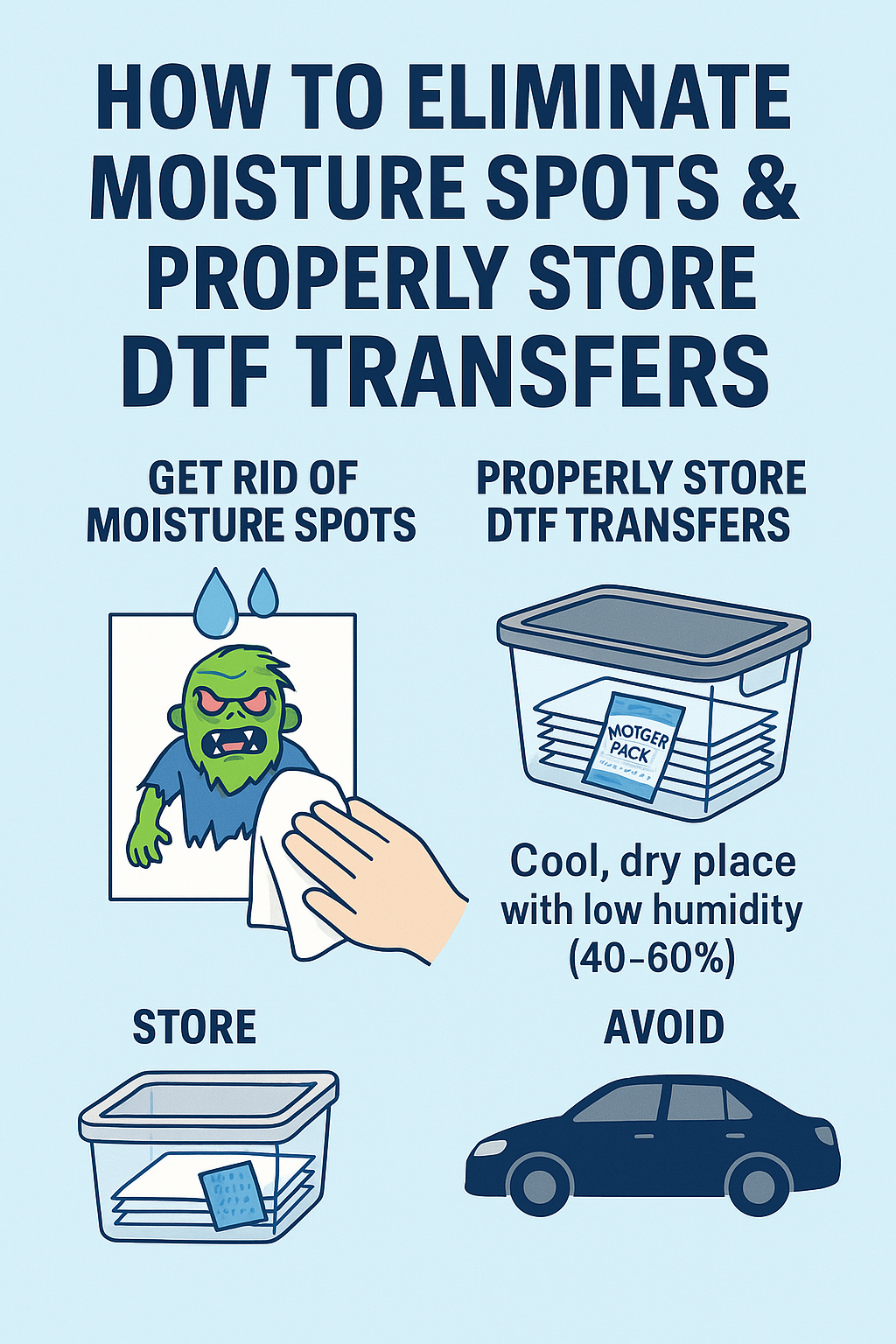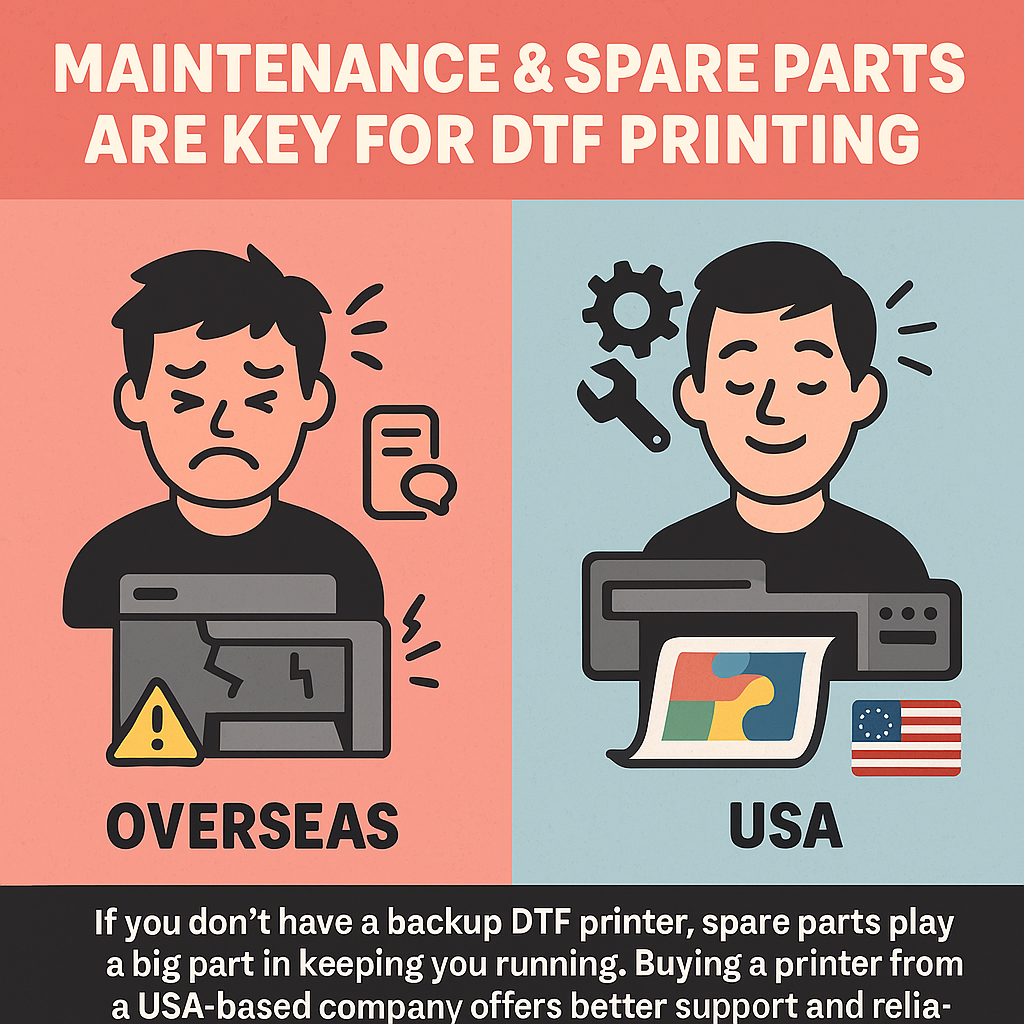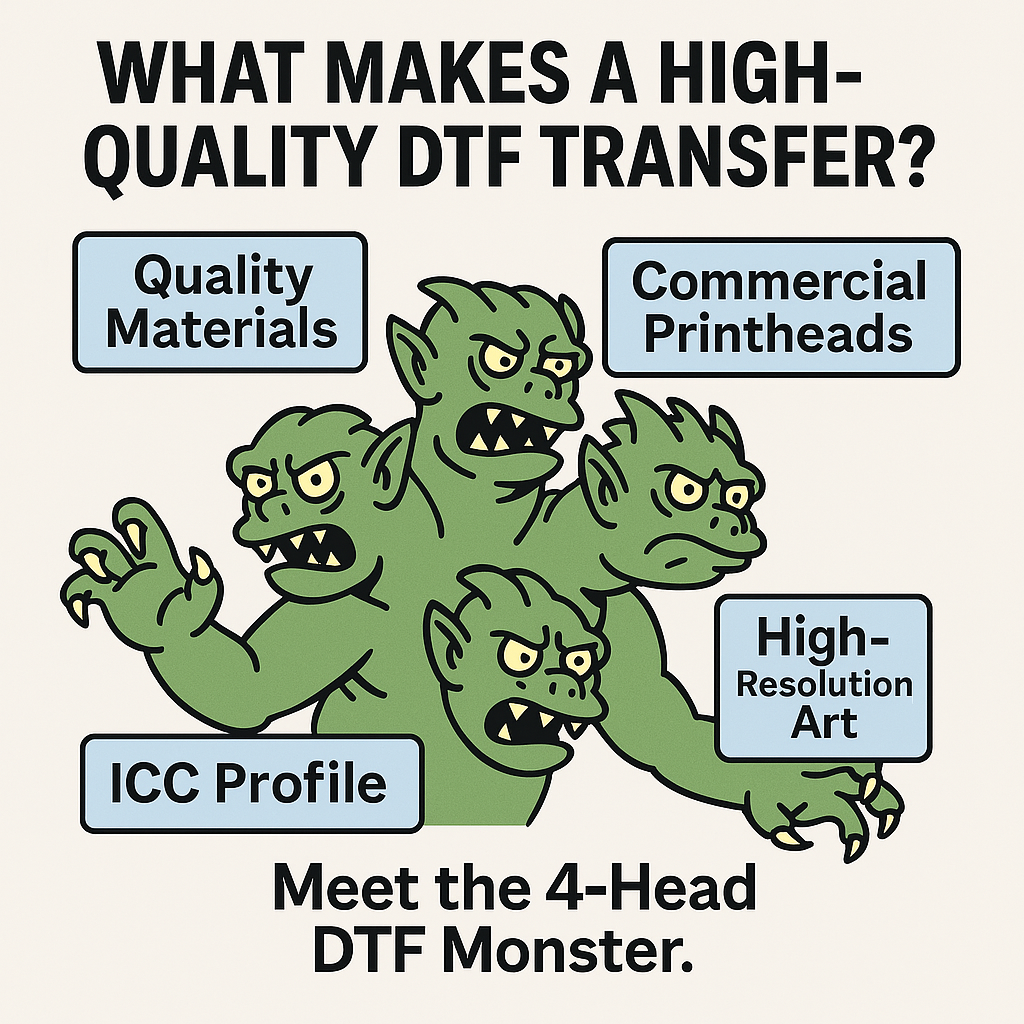
How to Eliminate Moisture Spots & Properly Store DTF Transfers
Have you ever peeled your DTF film after pressing and noticed oily or wet-looking spots on the transfer? That’s not a print defect—it’s moisture, and it can ruin the quality and durability of your final product if not handled right.
In this blog, we’ll show you how to fix moisture spots, and more importantly, how to prevent them through proper storage.
💦 What Are Those Oily Spots?
If you see shiny, blotchy, or oily areas on your DTF after peeling the film, it’s often due to moisture trapped in the transfer film or ink.
This happens when:
-
Transfers are stored in high humidity
-
The environment isn’t temperature controlled
-
There’s moisture between the ink and film that gets released under heat
🛠️ How to Get Rid of Moisture Spots (Quick Fix)
✅ Step 1: Blot Immediately After First Press
Use a dry cotton T-shirt or towel to gently pat the transfer after peeling the film. This absorbs any surface moisture.
✅ Step 2: Final Press with Absorbent Layer
Place a cotton T-shirt over the transfer during your final press. It acts like a sponge, pulling remaining moisture out while locking in the print.
📦 How to Properly Store DTF Transfers
Moisture issues usually start with how and where you store your transfers. Follow these tips to protect your prints long-term:
🧊 1. Cool, Dry Environment
Store transfers in a space where humidity stays between 40%–60%.
Avoid garages, bathrooms, or—worse—your car.
📉 2. Use Moisture Packs
Place silica gel or desiccant packs in the storage container to pull out excess humidity from the air.
🫙 3. Airtight Storage
Use plastic bins or airtight containers to shield your transfers from environmental exposure.
🧠 Pro Tip:
Avoid stacking DTF sheets too tightly or against hot surfaces like near heat presses, windows, or radiators—heat and pressure can introduce condensation.
🔁 Consistency = Quality
Moisture control isn’t just about looks—it affects adhesion, durability, and wash resistance. With the right storage methods and press technique, you’ll eliminate moisture problems before they even start.
Want more DTF printing tips? Follow our blog and check out our pro-grade DTF supplies for consistent, professional transfers.




